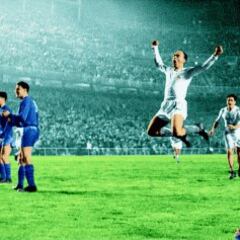Real Madrid’s oldest supporters’ club Peña Casa Mariano is 100 years old
A century ago, in a bar at the top of a narrow street in Lavapiés, 'madridísmo' was born. Mariano Herrero and four friends set up the first Real Madrid supporters’ club.
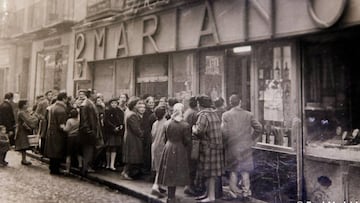
Exactly 100 years ago this month, eight years before the Spanish league started, madridísmo was born in a small bar at the top of a narrow street in Lavapiés, central Madrid. Mariano Herrero was the 29-year-old proprietor of a snug bar at the top end of Calle Mesón de Paredes. Much of the discussions that took place in his bar, Casa Mariano were centred on bull-fighting, but by 1920, there was growing interest for the local football scene and particularly Madrid Foot-Ball Club, who in June of that year, by royal assent, were officially renamed Real Madrid CF.
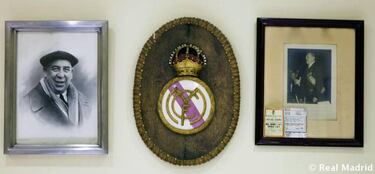
September 1920: the first Real Madrid supporters' club is founded
In September 1920, Mariano Herrero and four friends - Luis García Sicilia, Francisco Muñoz Lusarreta, Joaquín Villena and Luis de Urquijo (El Marqués de Bolarque), set up the first Real Madrid supporters’ club - Peña Casa Mariano with Villena as president (a role which Mariano never actually undertook himself).
For the first Real Madrid fans, following their team involved a certain amount of dedication – the first radio broadcast of a football match (anywhere in Europe) didn’t come until seven years later and the first televised match in Spain wasn’t until February 1959.
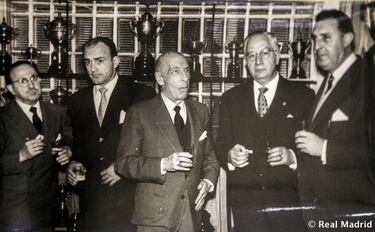
No television, no radio
Members of Peña Casa Mariano signed up to become proper Real Madrid club members or socios, watching the team play at the O’Donnell ground a couple of kilometres away. On full-time, a journalist friend, Rafael Barbosa would telephone Casa Mariano with the result, which would be scribbled on a blackboard and placed in the window. In the days before radio and television, it was the only way to find out the result and it made the bar a very popular stop-off for everyone in the neighbourhood.
The Spanish league began in 1929. Matches were played on Sunday afternoons and whenever Madrid lost, Mariano would be so upset, he would retire dejected to his room upstairs and wouldn’t resurface for another two days...
More fans joined and at its peak Peña Casa Mariano boasted 100 members– all fully signed-up socios with the club, with whom they were now forging a close relationship. In 1945, ex-player Santiago Bernabéu had become club president and most Sundays would pay Casa Mariano a visit – usually accompanied by a player, and occasionally having lunch there.
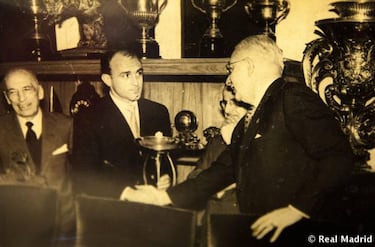
Di Stéfano, a regular visitor to Casa Mariano
“Di Stéfano, Rial, Zoco, Amancio, Pirri, Grosso… they would all come down here,” Jesús de Lucas, Mariano’s son-in-law and the peña’s seventh president told AS this week. “Don Santiago Bernabéu treated us like we were his own sons. We had a good relationship because we were a healthy group, we never asked the club for anything. Our philosophy was to help the club however we could and support the team unconditionally”. Which they did. In 1944, Casa Mariano made a donation of half a million pesetas towards a new stadium on the edge of the city in Chamartín – a significant sum of money. So significant, it was reported in the local and national media. “There was a column in the bar with a list of names of everyone who contributed – a pile of coins formed. One person would add two pesetas, someone else would chip in with three, or five… back then, the minimum wage was two or three pesetas, it was a lot of money”. And when Madrid built their first training ground, the Ciudad Deportiva on the Castellana, Casa Mariano had another whip-round and made another donation - 100,000 pesetas.
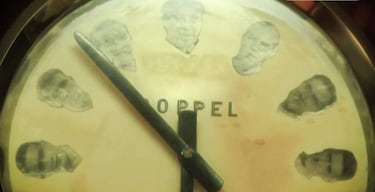
1947: Real Madrid inaugurate their new stadium in Chamartín
When Madrid inaugurated their new stadium in 1947, the peña, one of the few which was authorised by the club to sell tickets for games, would organise a fleet of coaches to take fans from Plaza Tirso de Molina or Cascorro directly to the ground.
By the early 50s, other supporters' clubs had started to spring up in and around the Lavapiés/Arganzuela districts – Peña Penalty, Gol, Los Macizos, Cascorro… now sadly long gone. Apart from Peña Casa Mariano, only one from that era remains - El Portillo on the Glorieta de Embajadores, founded in 1952, is the third oldest peña madridista; the second oldest, Peña Luis which was close by, no longer exists.
Mariano Herrero attended every single home game up until his death, aged 65, in January 1957 but the peña continued and Santiago Bernabéu would carry on popping in at Casa Mariano. He was present for their 50th anniversary in 1970, presenting them with a commemorative plaque. “He would visit every week until he was too ill to come. Myself and [peña secretary] Pepe Calles attended his funeral in Almansa [Albacete],” remembers Jesús de Lucas.
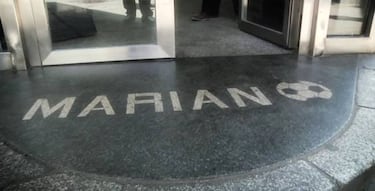
Casa Mariano moves to Plaza Tirso de Molina
Every Christmas, Peña Casa Mariano would hold a lottery and all of the money raised would go towards a party for 100 local, disadvantaged children from the orphanage on Avenida Rafael Ybarra. “We’d hire a coach and bring children from the orphanage to Casa Mariano; we’d invite them to breakfast – hot chocolate and churros, put on a party for them and later hand out presents. The kids absolutely loved it,” recalls Jesús. The Real Madrid Foundation, with their ‘No Child without a toy at Christmas’ campaign continue the tradition of helping children to this day.
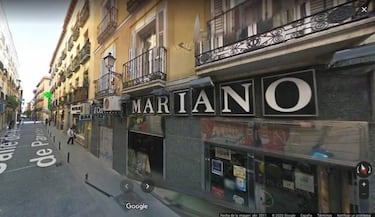
Original Casa Mariano bar closes in 2012
The original Casa Mariano bar on Mesón de Paredes with its wooden panelled walls, zinc bar and wonderful 1920s stainless steel Carlos Coppel clock (instead of numbers, it featured the faces of the players from the pre-Di Stéfano side - with Mariano himself taking pride of place at 12 o’clock) closed for good at the end of 2012. It was a victim of recent gentrification of the neighbourhood and the infamous Boyer Decree – a 1985 ruling which prompted the demise of several of the capital’s century-old businesses operating under old, outdated rent contracts.
Fortunately, the peña itself is still going, having moved to newer, more spacious premises below Bar Marian on Plaza Tirso de Molina in the 1960s. The current 22 members regularly meet there to talk about the Beautiful Game and obviously, Real Madrid.
Related stories
At 91 years old, Mariano’s son-in-law Jesús de Lucas is still going strong too, although he has now passed the presidency down to someone younger. “Enthusiasm is what keeps us going,” he explains. “I’ve been lucky to visit many places because of Real Madrid - Glasgow, Amsterdam… crying with my brother when we won the Séptima... I’ve been a Real Madrid club member all of my life; it’s a passion that has been passed down to my sons and from them to their sons. Following Madrid and maintaining the peña for so many years takes a lot of effort, many peñas have disappeared but you have to continue, keep going”.

Today, there are 2,254 Real Madrid supporters’ clubs that are officially approved and registered with the club, 214 of them in countries outside of Spain, across all five continents. It’s hard not to wonder what Mariano Herrero would think, if he were able know that 100 years on, his supporters’ club - the first one, still exists – and during that time its members have watched the club win, amongst other things, 34 leagues and 13 European crowns. Here’s to the next 100!
